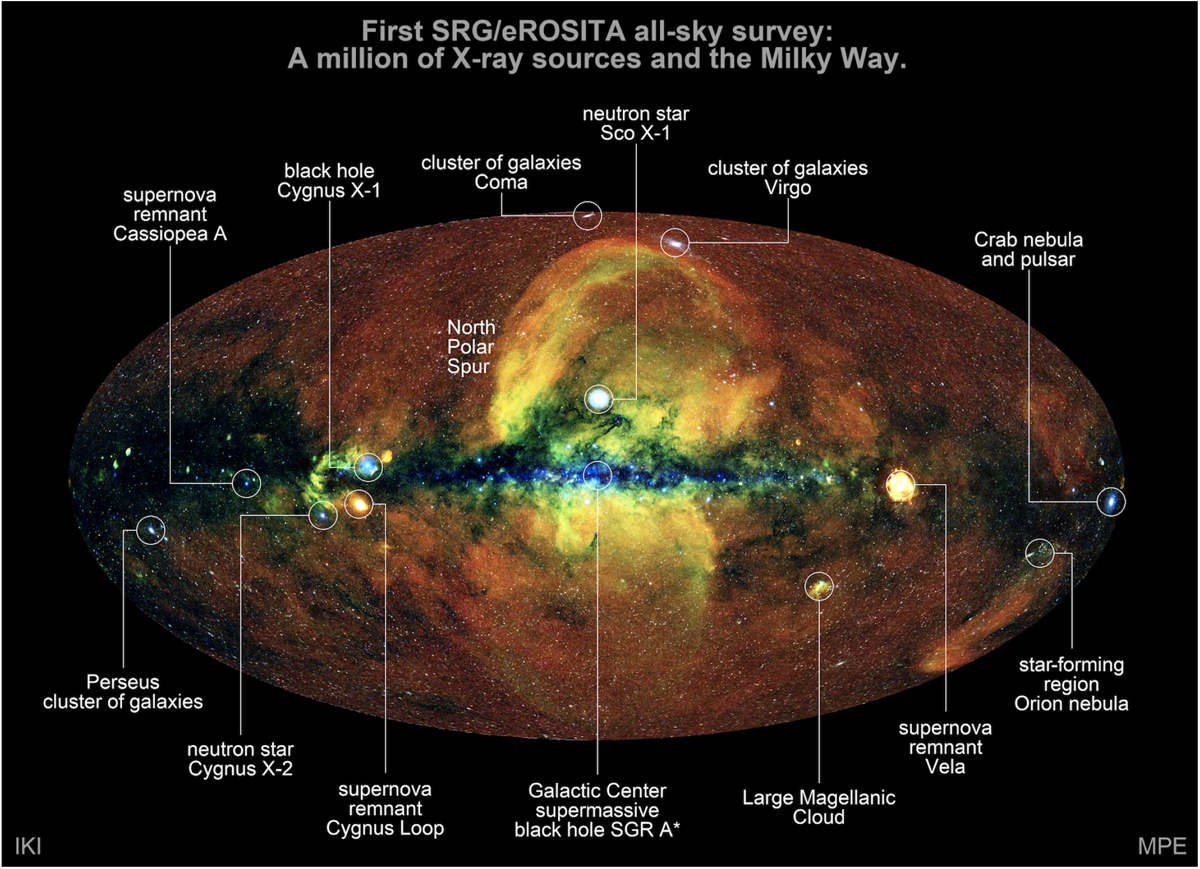Fig. 20

Download original image
Annotated version of the SRG/eROSITA first all-sky image. Several prominent X-ray features are marked, ranging from distantgalaxy clusters (Coma, Virgo, Fornax, and Perseus) to extended sources such as SNRs and nebulae to bright point sources, e.g., Sco X-1 (the first known extrasolar X-ray source). The map of the whole sky is constructed by the two scientific consortia of SRG/eROSITA in Germany and Russia. Each consortium created their images for one half of the sky. The map is an RGB map, where photons of different energies are shown in different colors: from 300 to 600 eV in red, from 600 eV to 1.0 keV in green, and from 1 to 2.3 keV in blue. The colors on this map, obtained from about 400 million photons registered by eROSITA during six months of the survey, allow one to immediately judge the temperature of radiating gas, ranging from 3 to more than 10 million K. At the very center of the map, the supermassive black hole Sgr A* is located with a mass of about 4 million solar masses. It is a rather weak X-ray source and is nearly invisible on this map. In the middle plane of the picture lies the disk of the Milky Way. It looks dark because the molecular gas and dust in the plane of the Galaxy absorb X-rays. The blue dots located in this region reveal a large number of bright and powerful X-ray sources in the Milky Way: X-ray pulsars, accreting black holes, neutron stars, white dwarfs in binary stellar systems, and remnants of supernova explosions.
Current usage metrics show cumulative count of Article Views (full-text article views including HTML views, PDF and ePub downloads, according to the available data) and Abstracts Views on Vision4Press platform.
Data correspond to usage on the plateform after 2015. The current usage metrics is available 48-96 hours after online publication and is updated daily on week days.
Initial download of the metrics may take a while.


